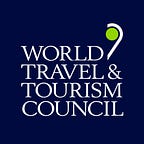Five ways destinations can stay competitive
The demands of tourists have changed radically over the past decades, while at the same time the number of places marketing themselves as tourism destinations has grown exponentially. Although Spain and Greece have historically been leading destinations for those seeking sunshine; Turkey, Croatia, Bulgaria, Dubai, Thailand and many others have put their hat in the ring and developed their coastlines for sun-loungers to enjoy.
At WTTC’ Global Summit 2019 (on 4 April in Seville, Spain), an expert panel will discuss how destinations can continue to innovate to ensure their continued sustained growth rather than their “demise”. Here are few elements which our panellists are likely to explore.
Knowing your audiences
Travellers are more sophisticated and demanding than ever before; yet marketers have far better tools to understand them! There’s a vast amount of data available now about traveller & consumer behaviour, spending patterns, interests and desires. With the advent of big data, it’s becoming easier to assimilate and make sense of it. It’s also possible to test ideas and roll out new concepts far more swiftly. The destinations which will thrive will be those that make the most of their data to improve product, manage and protect key assets, sharpen messaging and tap into new traveller desires.
Destinations are likely to place much greater focus on targeting select traveller segments; with destinations having limited capacity moving up-market to appeal to a smaller number of more affluent travellers through this better understanding of their needs. Slovenia for example is now marketing itself as a ‘boutique’ destination — focussed on high value, sustainable tourism.
Broadening the offer
As high-profile sights and experiences start to reach capacity, destinations will increasingly develop strategies to encourage tourists to go beyond traditional landmarks. Changing the messaging can be very powerful. Bruges, for instance, started to become very crowded during peak seasons. As a result, the town has started to promote itself as a winter destination, to spread tourists arrivals throughout the year. Destinations are also broadening their offer by developing new products for tourists. Many alpine ski resorts have successfully turned themselves into summer adventure destinations, creating mountain bike and hiking trails, building ziplines and even hosting music festivals.
Simplifying the high-level message
While broadening the offer is critical, really successful destinations stand for something specific. There may be a range of experiences on offer covering the needs of multiple audiences — but successful branding requires destinations to dig below the surface and find the common themes that unite them. These are typically more subtle and even intangible; such as the culture and outlook of locals or even the destination’s natural environment. While the slogan and a logo are what’s most visible; developing a brand for a destination involves more depth to align with local values and ensure that it’s people can rally behind it.
Planning for the long-term
Some destinations are wrestling with their popularity; struggling to maintain a high-quality tourist experience whilst ensuring the satisfaction of its citizens. It’s important for destinations to develop a strategy to sustainably manage tourism growth, accounting for infrastructure capacity and tourist spread; all the while ensuring that local communities benefit from tourism. One recent example is Japan, which recently announced plans to triple inbound tourists by 2030 with a detailed plan built on in-depth research.
A key element of Japan’s strategy is to develop destinations beyond Tokyo and Kyoto such as the Shikoku and Tohoku Regions. Another involves attracting more affluent long-haul tourists who stay longer, explore further and spend more. What’s more, the plan extends to 2030. Such long-termism, provides foundation for building on the innovation and passion of a place’s tourism community.
Embracing new technologies
Travellers today are influenced by online reviews, things they see their friends doing on Facebook, enticing images on Instagram and more. Destinations need to find innovative ways to use these exciting but very crowded new channels, particularly when it comes to attracting younger travellers. Micro-targeting in social media ad campaigns is a huge opportunity to reach specific niches with tightly focussed messaging about the experiences on offer. To do that, data and innovation are crucial. For instance, Visit London developed a mobile gaming app to incentivise visitors to explore less popular parts of the city and Visit Estonia’s Stress Buster uses facial recognition to identify stressed-out people and then plays sounds from Estonian nature to help them relax.
Watch this year’s WTTC Global Summit 2019 in Seville, Spain on 2–4 April live at: wttc.org/livestream
